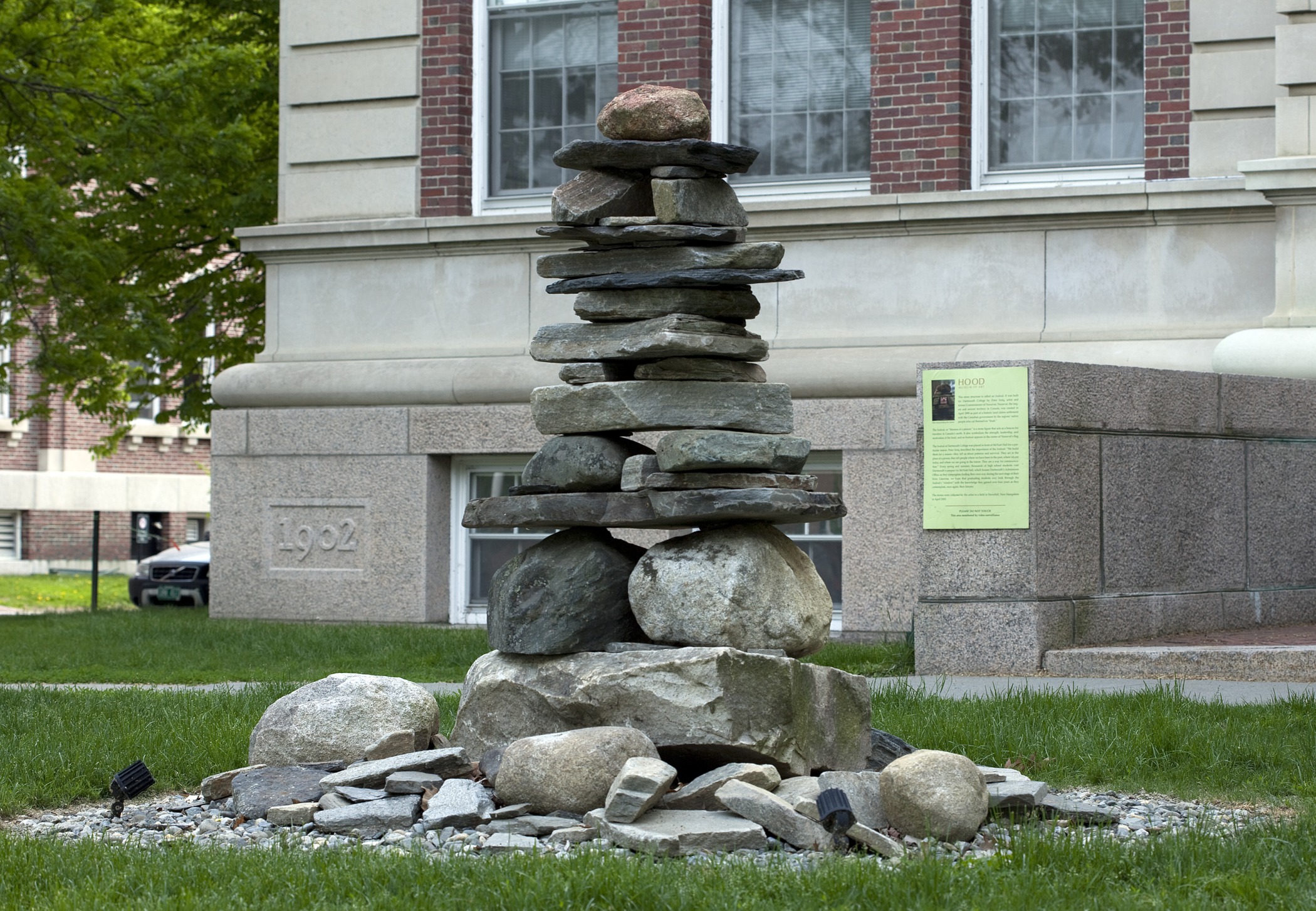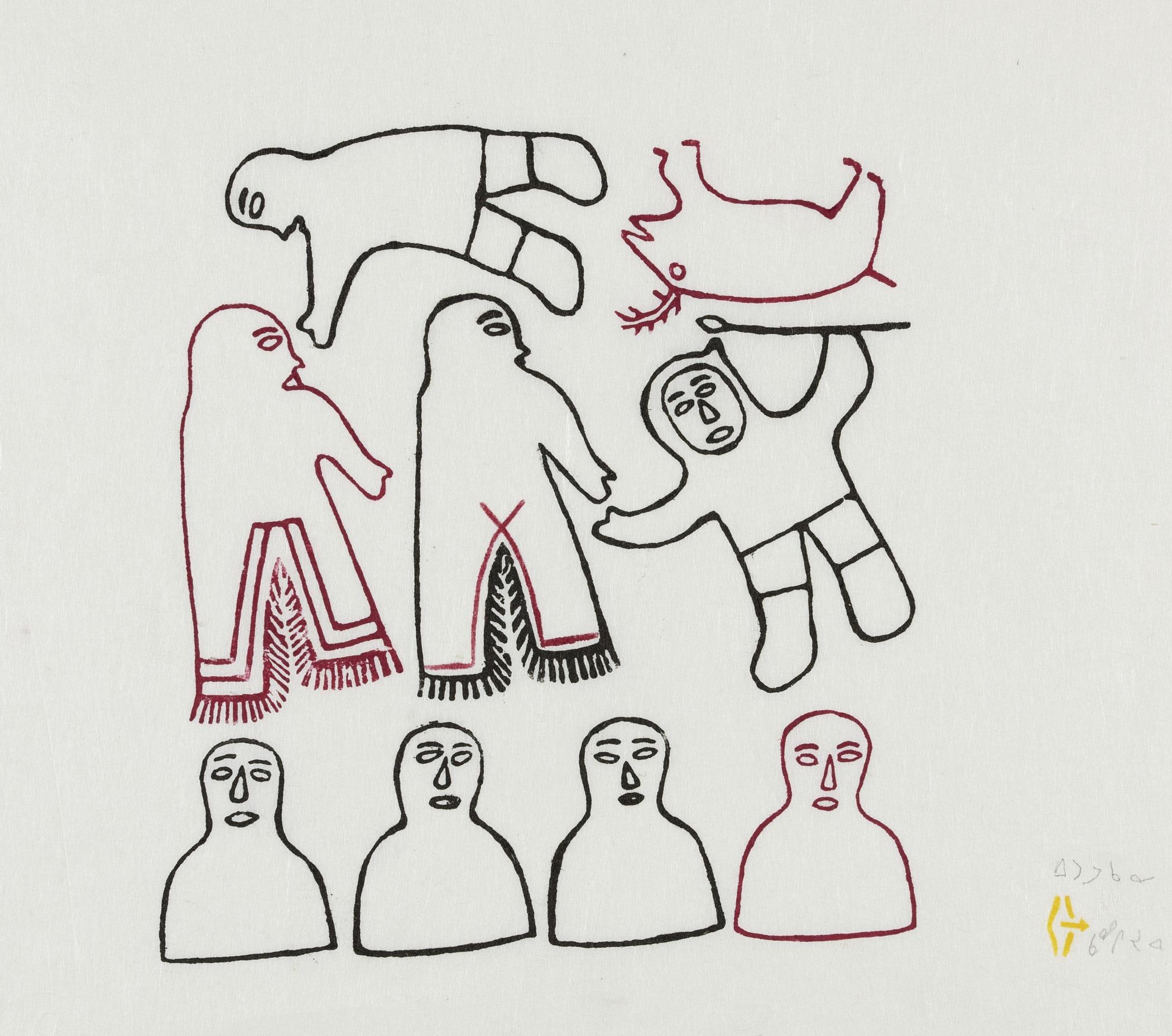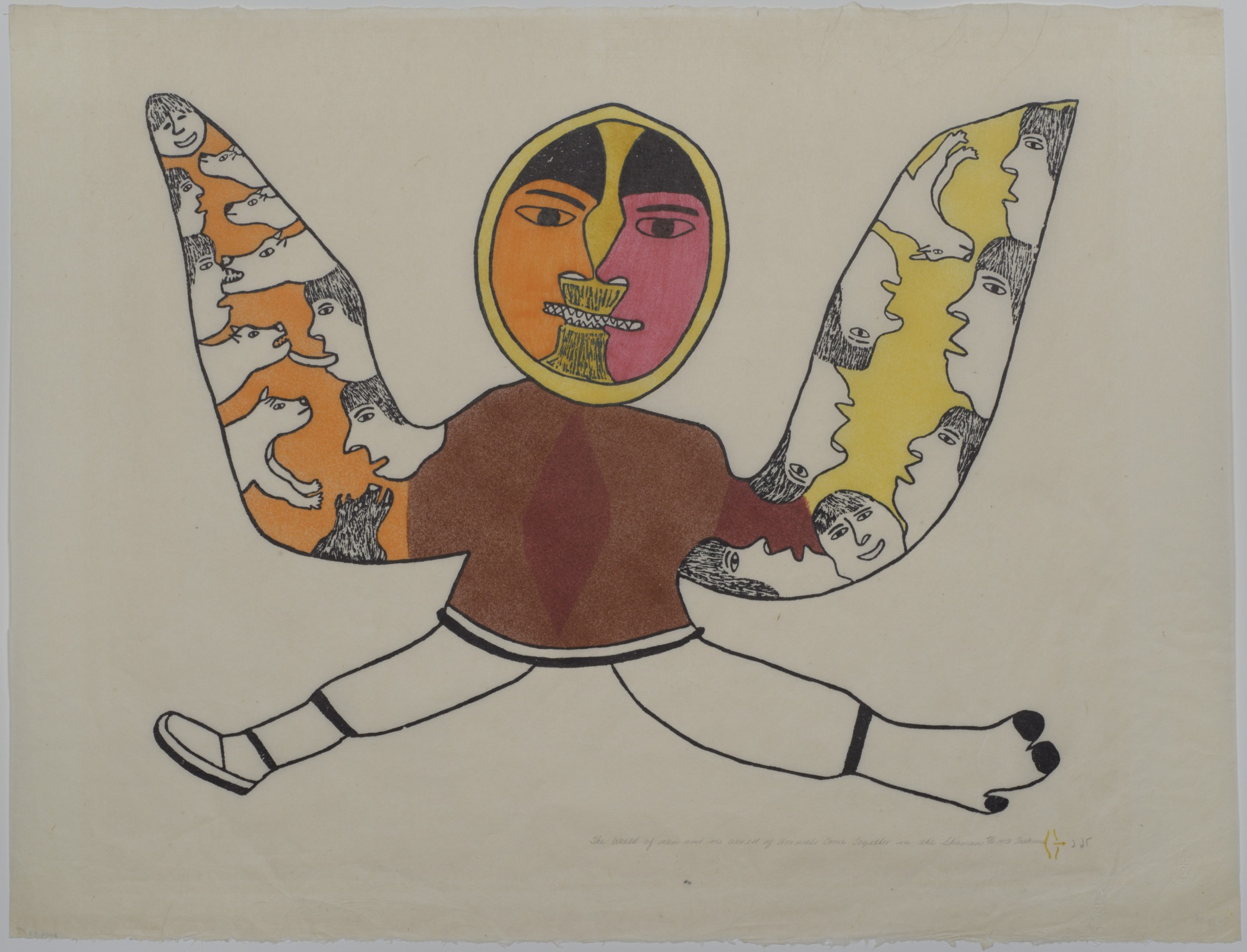Piita Irniq, Canadian (Inuit), born 1947
Inuksuk
- 2007
- Stone
Hood Museum of Art, Dartmouth College: Commissioned by the Trustees of Dartmouth College; 2009.81. © Piita Irniq
visibilityLook & DiscussThis sculpture is an inuksuk (in-OOK-shook). Sculptures like this dot the landscape in the Arctic. This one, which is roughly the height of a man, was constructed on Dartmouth College’s campus by Inuit artist and elder Piita Irniq.
explore the object
Inuksuk means “in the likeness of a human.” These sculptures of unworked stones are the oldest surviving man-made objects in the Arctic landscape. They are used for communication and way-finding, to mark a sacred place, or to serve as a memorial for a loved one.
An inuksuk can be small or large and made up of just one or several rocks balanced upon one another. The rocks, collected locally, are either round or flat. The arrangement of the stones indicates the inuksuk’s purpose. Inuksuit (In-ook-SHOE-eet, the plural form of inuksuk) that seem to have arms or legs can indicate a path through mountains. An open “window” in the stones might direct a hunter’s gaze toward a good hunting area. An inuksuk with antlers might mark a place where its builder buried and stored food. Although most appear alone, sometimes Inuit intentionally arrange inuksuit across great distances or group them around a sacred place.
It is illegal to destroy an inuksuk. The inuksuk has become a symbol of the Inuit and their homeland. Inuksuit are venerated as symbols of ancestors who knew how to survive on the land in the traditional way. Each inuksuk is a welcome sight to travelers.
At Dartmouth, this inuksuk sits in front of the Admissions Office. When you look through the “window,” your gaze is directed to one of the oldest buildings on campus across the Dartmouth Green. It welcomes potential students, offers direction for their future, and celebrates the contributions of indigenous students on campus.
meet the artist
Piita Irniq was raised on the land, living with his family in igloos in winter and tents in the summer. As a child, he was sent away to a residential school far from home where he was forbidden to speak Inuktitut, the Inuit language. The experience was very painful for Irniq and other Inuit children like him. Irniq now raises awareness of this dark period in Canadian history and promotes Inuit culture and knowledge. He has served as a political leader in the Inuit territory of Nunavut. As an artist, he is known for the inuksuit he builds around the world, including the one for the 2010 Winter Olympics in Vancouver.





